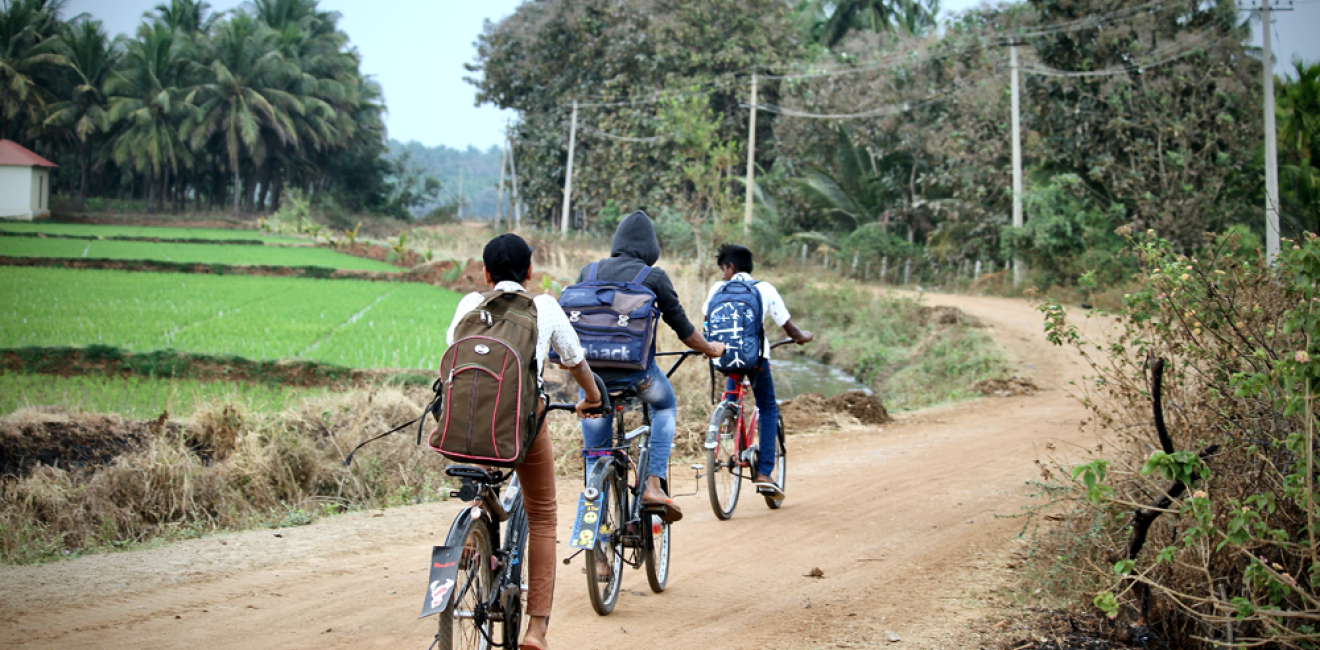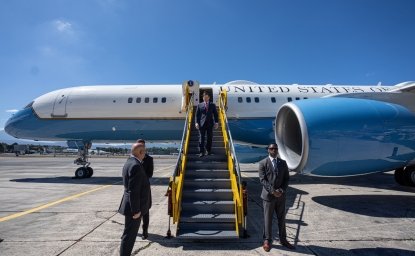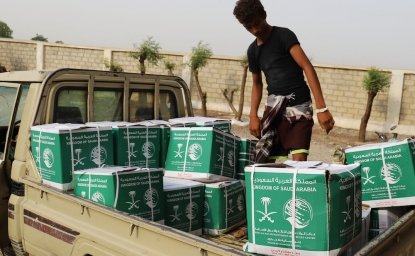
The Biden Administration seems to be continuing the practice of recent administrations to build on the initiatives of their predecessors in international development. Even before taking office, U.S. Agency for International Development (USAID) Administrator Samantha Power embraced the goal of “self-reliance” in her confirmation hearing before the Committee on Foreign Relations of the U.S. Senate. In response to a question regarding the contrasting approaches to international cooperation of the People’s Republic of China and the United States, she stated, “We actually believe in local self-reliance, that is what we are working toward.” This short sentence encapsulates the core principles of “the Journey to Self-Reliance,” the clearest and most data-driven philosophy to guide USAID in decades, first articulated by former Administrator Mark Green in 2017. Under this rubric, the United States has declared that, rather than being an end in itself, foreign aid should have the explicit, measurable goal of building self-reliance in partner nations as soon as possible.
As Green laid out the values at heart of the new approach — individual human dignity, a hand up over handouts, emphasizing outcomes instead of outputs, and the natural desire for national and local leaders to avoid dependency on other countries— observers found it hard to argue with the Journey to Self-Reliance. It was a call to action to ensure a laser-focus on what makes good development: country-centric, partnership-driven, and with a deep focus on ensuring all work kept long-term sustainability and ultimate country ownership front-and-center. He and his team then turned to development experts and USAID’s staff to turn these values into a framework.
USAID’s Policy Framework is the document that articulates the Journey to Self-Reliance in a formal way. It describes the Agency’s role in promoting the Journey to Self-Reliance as “building a country’s capacity to plan, finance, and implement solutions to local development challenges, and ensuring that there is a commitment to see these solutions through effectively, inclusively, and with accountability.” The Policy Framework makes a purposeful distinction between “country” and “government” and emphasizes that governments, civil society, the private sector, communities, and citizens themselves must be equal partners in USAID’s programs.
I believe the purpose to foreign assistance should be ending its need to exist. Each of our programs should look forward to the day when we can end it. And around the world we should measure our work by how far each investment moves us closer to that day.
-----Administrator Mark Green, August 7, 2017
Unlike the wave of closures of USAID Missions in Latin America, Eastern Europe and Central Asia when the United States hastily “graduated” countries in search of a "Peace Dividend” in the late 1990s and early 2000s, the approach of the Journey to Self-Reliance uses objective data to estimate the readiness of the government, civil society, and private sector in lower- and lower-middle-income countries to design, manage, and pay for their own development. In some nations, these data show that the day foreign assistance will no longer be necessary is close at hand; in others, external development aid will be required for many decades to come. At the end of the Journey, when countries achieve advanced levels of self-reliance, Green envisioned not an abrupt cessation of U.S. foreign aid, but a “Strategic Transition” to a new model of peer-to-peer partnership. But in all cases, the Journey to Self-Reliance offers, for the first time, a clear, non-partisan methodology for assessing progress to enable USAID to calibrate its programs and investments.
So where should the Journey to Self-Reliance fit in today’s USAID? As Ambassador Samantha Power settles in as Mark Green’s successor as Administrator of USAID, it is worth highlighting some of the central tools and concepts created to support the Journey to Self-Reliance, and examining how they can be an asset to the new Administration. Here are four thoughts:
1. The Journey to Self-Reliance created USAID's first-ever common language and unifying development philosophy for the entire Agency and its partners
From Burma to Bamako, Mission Director to intern, government partner to non-governmental implementer -- when it comes to defining how USAID develops a country partnership, everyone knows about the Journey to Self-Reliance’s theory of change underpinned by the twin concepts of "Commitment" and "Capacity," and the approaches needed to make the right choices to show improvement on both.
These are ensconced in 60+ Country and Regional Development Cooperation Strategies (CDCSs/RDCSs), which all follow the same structure and employ the same approaches (tailored of course to the local context), which ensures a first-of-its-kind level of consistency and comparability.
This has allowed USAID to "speak" across the Agency in a way that has not happened in years, and ensures all its units (and partners) are pulling towards the same strategic approach.
In addition, the Journey to Self-Reliance relies upon five complementary lines of effort to accelerate Capacity and Commitment at the country level:
- Through “Financing Self-Reliance,” USAID works with governments to develop “effective, transparent, and accountable systems to better-mobilize domestic resources” and foreign direct investment on a sustainable basis;
- “Private-Sector Engagement” involves improving and broadening USAID’s partnerships with commercial firms and investors, including “innovative financing approaches”;
- “Redefining the Relationship with Partner Governments” means USAID realigns the incentives that define the Agency’s country-level relationships to ensure they advance self-reliance;
- “Rethinking How We Partner” encompasses internal reforms of policies and procedures at USAID to focus on new, underutilized, and local partners through Effective Partnerships and Procurement Reform, the Agency’s first Acquisition and Assistance Strategy, and the New Partnerships Initiative; and
- “Countering Malign Influence" helps countries avoid dependency and protect their sovereignty and journey towards self-reliance.
Each of these approaches requires cross-cutting coordination and change that go well beyond just the Regional Bureaus that supervise USAID’s field Missions, which makes the Journey to Self-Reliance a whole-of-Agency Transformation.
2. The Journey to Self-Reliance created one of the first-ever visualizations of the development spectrum
The Journey to Self-Reliance’s flagship tool, the annual Self-Reliance Country Roadmaps, provides a first-of-its kind visualization of the development spectrum through 17 independent, publicly available, third-party metrics that measure national Capacity and Commitment; this in and of itself is a major achievement and important contribution to development writ large.
Along with a larger compendium of hundreds of curated secondary metrics and financing profiles, the Roadmaps aggregate objective, best-in-class assessments of economic freedom, democracy and citizen-responsive governance, environmental and social conditions (including indicators in health and education), human rights, equality, and other factors that reflect progress against the two dimensions of commitment and capacity. Every USAID Mission has now incorporated analysis of these metrics into its CDCS or RDCS that will guide its programmatic decisions for the next five years.
The Roadmaps are a public good that offer a far more nuanced and sophisticated view of the development spectrum than cruder tools like per-capita Gross National Income. They provide a simple yet powerful framework to analyze where a country is on its development journey and where (at a high level), changes need to occur for progress to take place. For the first time, the Roadmaps allow users around the world to flesh out a country's development picture by using the same data, and bring more evidence to bear on the choices that governments, civil society, the private sector, and communities need to make. This has allowed USAID and its partners to be far more data- and evidence-driven in their choices, by ensuring that "data trump feelings," and has helped the Agency create more rationalized partnerships and investments.
3. The Journey to Self-Reliance objectively identifies the financing gap between what a country needs versus what it currently gets in U.S. foreign assistance (if the goal is to move it along the development spectrum)
USAID and its partners have long-bemoaned the mismatch created by Congressional directives and other impediments between what each country needs and the kind of assistance it actually receives. In many missions, close to 100% of funding is already earmarked for particular sectors and activities, even if those sectors and activities are not what are most-pressing if the goal is to move the country along its self-reliance journey. The previous Administration made little progress in this regard, in part because until now there has been little quantified evidence to show the scale and scope of the problem, nor an ability to show a credible alternative.
The Biden Administration now has an opportunity to change this dynamic, because the new CDCS and RDCSs required the construction of two budgets -- one business-as-usual, and one optimized for the Journey to Self-Reliance, based on the data-driven Roadmaps (and related) assessments. The "delta" between these two budgets (overall, and by country) is a powerful tool for the Agency to engage its funders, and start to break the political logjam to earn more budgetary flexibilities.
The Self-Reliance budgets are the product of a zero-based-budgeting process in which USAID’s Missions set aside the current pre-determined restrictions, and are asked to present a field-level perspective of the resources they believe they actually need to help advance development -- using their Self-Reliance Roadmaps and other evidence sources -- in their host countries. They represent a quantitative way for USAID and the Office of Foreign Assistance at the U.S. Department of State to push back on the internal bureaucratic inertia and parochialism that so often prevent our aid programs overseas from adapting to changing circumstances. In addition, these two CDCS/RDCS budgets are currently not public, but making them so could go a long way in helping broker much-needed conversations on getting strategies and budgets to align. The Administration and Congress should fund against USAID’s CDCS/RDCS budgets.
4. The Journey to Self-Reliance has forced uncomfortable inter-agency conversations about what to do "towards the end of the Journey " ... and revealed that not everyone wants to end the need for foreign assistance
Under Administrator Green USAID developed its first-ever data-driven approach to moving to a peer-to-peer relationship with recipients of funding ("Strategic Transitions"), and how to think through what to do in such countries. The debate with the U.S. Department of State and Congress highlighted the need for a cogent, inter-agency process to:
- Make tradeoffs between foreign policy and development policy in a world of limited resources when it comes to more-advanced countries;
- Better-define the “swimlanes”/value-add of each piece of the U.S. development apparatus; and
- Identify the significant management shifts needed for USAID’s Missions to take the sometimes very painful steps to make a Strategic Transition (e.g., end programs, dramatically shift to new ones, downsize, etc.)
To be clear, a Strategic Transition is not the exit of the entire U.S. Government, or even of all foreign assistance, from a country; it is just the appropriate right-sizing by USAID in places where the Agency is an over-dominant "cookie" in the broader bilateral relationship. Since Administrator Power now sits on the National Security Council, this could be an opportune time for USAID finally to obtain alignment across the inter-agency (and Congress) on Strategic Transitions and how to carry them out in a whole-of-Government way, rooted in objective data and evidence from the Roadmaps.
* * *
The Journey to Self Reliance’s inherent "country-centric" and locally-owned approach ensures its consistency with evolving international thinking on development, aligned with Agenda 2030, and in contrast with the Chinese model. We urge Administrator Power and the rest of the Biden Administration to keep the vision, vocabulary, framework, and tools that the Journey to Self-Reliance brought to the Agency, as well as the detailed work done at USAID on procurement, partnering, and localization.
Authors

Former Chief of Staff at USAID

Senior Director for Strategy and Business Development, Digital Impact Alliance (DIAL) at the UN Foundation

Explore More
Browse Insights & Analysis
Inversiones de impacto para la innovación social con Nat Ware en Tres Respuestas con Iván Duque

Japan’s PM Will Need More Than Just Charm to Win Over Trump This Time



